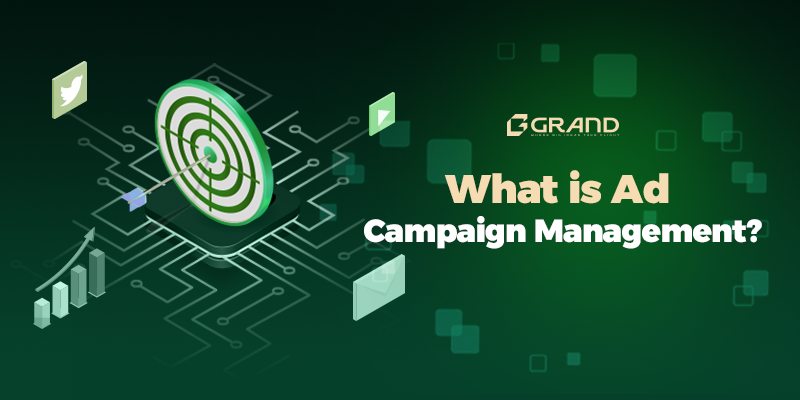7 Successful Strategies for Managing Advertising Campaigns
Managing advertising campaigns is a topic many turn to after multiple failed attempts at marketing their businesses.
Some assume that creating an ad campaign is a straightforward task that can be done randomly without strategic planning and a touch of creativity.
However, ad campaigns are unlikely to achieve their goals without clear strategies. It’s crucial to understand the strategy involved in managing ad campaigns and how they can impact your business.
This article will guide you through the key strategies for effective campaign management.
What is advertising campaigns Management?

Advertising campaigns management is a marketing process focused on delivering a single message to a specific target audience to achieve the best possible outcome for your business. It is called the rule of thumb.
This process involves selecting the appropriate platform to promote your business, such as:
- Newspapers and printed magazines.
- Billboards in main streets and public areas.
- TV advertising campaigns.
- Social media ad campaigns are more cost-effective and precise.
The goal is to maximize the impact of your campaign by strategically choosing the right platform and message for your target audience.
7 successful strategies for managing advertising campaigns:

For each advertising campaign, there’s a primary goal to achieve.
To get the best results, you should follow one of the following advertising campaign management strategies:
1 – Identify the Target Audience:
Your brand might target multiple audience segments, but when managing an advertising campaign, it’s crucial to focus on one specific segment that aligns with the campaign’s goal. This targeted approach maximizes the effectiveness of the campaign, ensuring that the message resonates strongly with the selected audience, leading to better results and a higher return on investment.
2 – Choose the Right Platform:
Select the most relevant platform for your target audience.
3 – Craft a Clear Message:
At this stage, content plays a crucial role in the success of your advertising campaign. Selecting the right words based on market analysis and the target audience is essential.
The advertising message should be clear, focused, and crafted to captivate the audience’s attention.
A content writer must choose words that resonate with the audience and drive them toward the campaign’s goal.
Additionally, using catchy slogans, short phrases, or even visuals like images or videos can effectively highlight the features of the product being promoted.
4 – Engage with Creativity:
The creative aspect is one of the most crucial strategies in managing advertising campaigns, particularly on social media.
The marketing team must come up with innovative and unique ideas to stand out from competing brands.
For example Creativity in graphic design, motion graphics, content writing, and developing original campaign concepts.
5 – Measure and Analyze Performance:
This strategy is crucial for advertising campaigns and is especially effective on social media.
By using analytical tools such as Google Analytics, Google Tag Manager, and Mixpanel, you can measure and analyze the performance of your campaign from the start to its conclusion.
These tools help you track the results in real-time and make necessary adjustments to ensure the campaign meets its goals. This approach allows you to optimize the campaign’s effectiveness and achieve satisfactory outcomes.
6 – Provide Attractive Offers:
Stand out with unique offers. You can use this strategy in various types of advertising campaigns, whether in digital marketing or traditional marketing.
7 – Ensure Customer Interaction:
Facilitate communication with your audience. In traditional marketing, you can create opportunities to engage with customers and gauge their response to your ads by including contact numbers or an email address in your campaigns.
How to Ensure the Success of Your Digital Advertising Campaign?

Success in digital advertising can be measured effectively through key metrics:
1 – ROAS (Return on Ad Spend) :

is a key metric to determine if your advertising spend is generating profitable returns. For example, if you spend 1000 SAR on a campaign and earn 3000 SAR in revenue, you can calculate your ROAS using the formula:
(Revenue/AdSpend)∗100=ROAS(Revenue / Ad Spend) * 100 = ROAS(Revenue/AdSpend)∗100=ROAS
In this case:
(3000/1000)∗100=300(3000/1000) * 100 = 300%(3000/1000)∗100=300
A higher ROAS percentage indicates a more successful campaign, though the specific target can vary depending on the type of product or service being advertised.
2 – CTR (Click-Through Rate) :

is a metric used to measure the effectiveness of your digital advertising campaigns.
It is calculated by dividing the number of clicks your ad receives by the number of times the ad is shown (impressions) and then multiplying by 100 to get a percentage:
CTR = (Number of Clicks/Number of Impressions)×100
This percentage helps you determine whether your ad is compelling enough to attract clicks from your target audience.
A higher CTR indicates that your ad is engaging and successfully driving traffic.
3 – CLTV (Customer Lifetime Value) :
is a metric that helps you predict the total revenue a customer is expected to generate throughout their relationship with your business.
This metric is crucial for developing long-term customer retention strategies, whether through advertising campaign management or other marketing approaches.
By understanding CLTV, you can tailor your efforts to maximize the value you gain from each customer, ensuring that your marketing investments yield sustainable returns over time.
For tailored campaign management, partner with GRAND Marketing Agency here.






